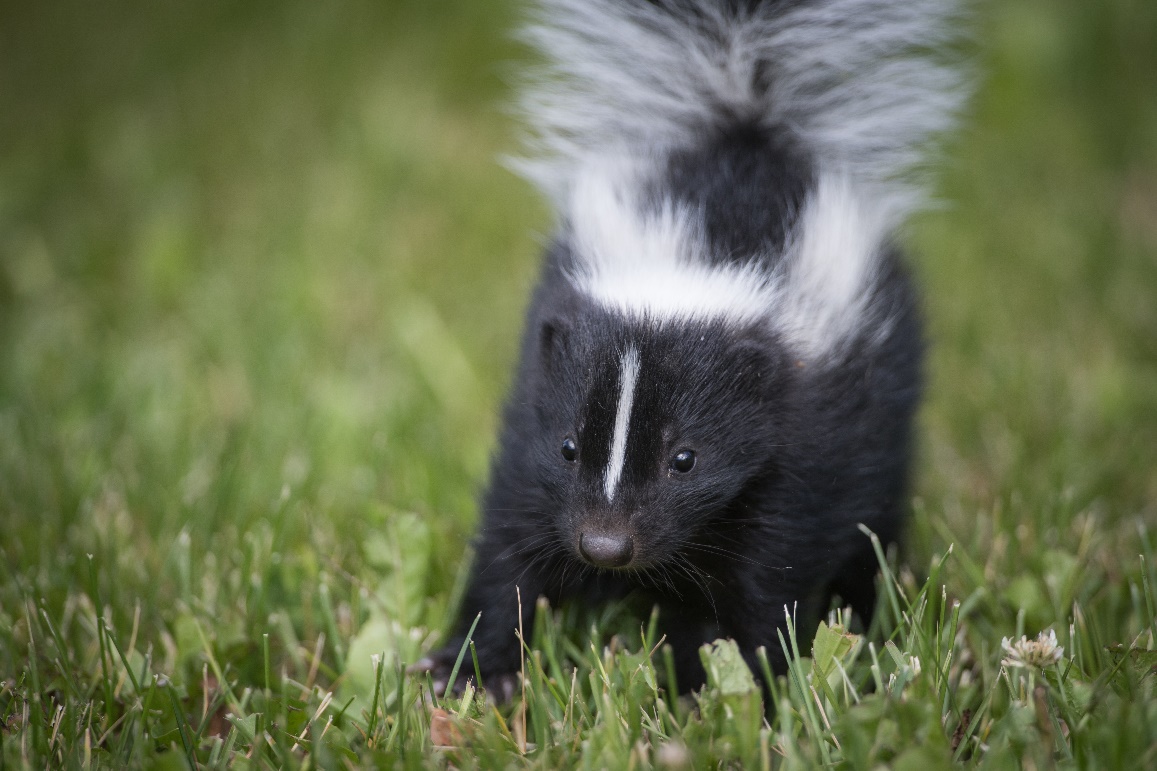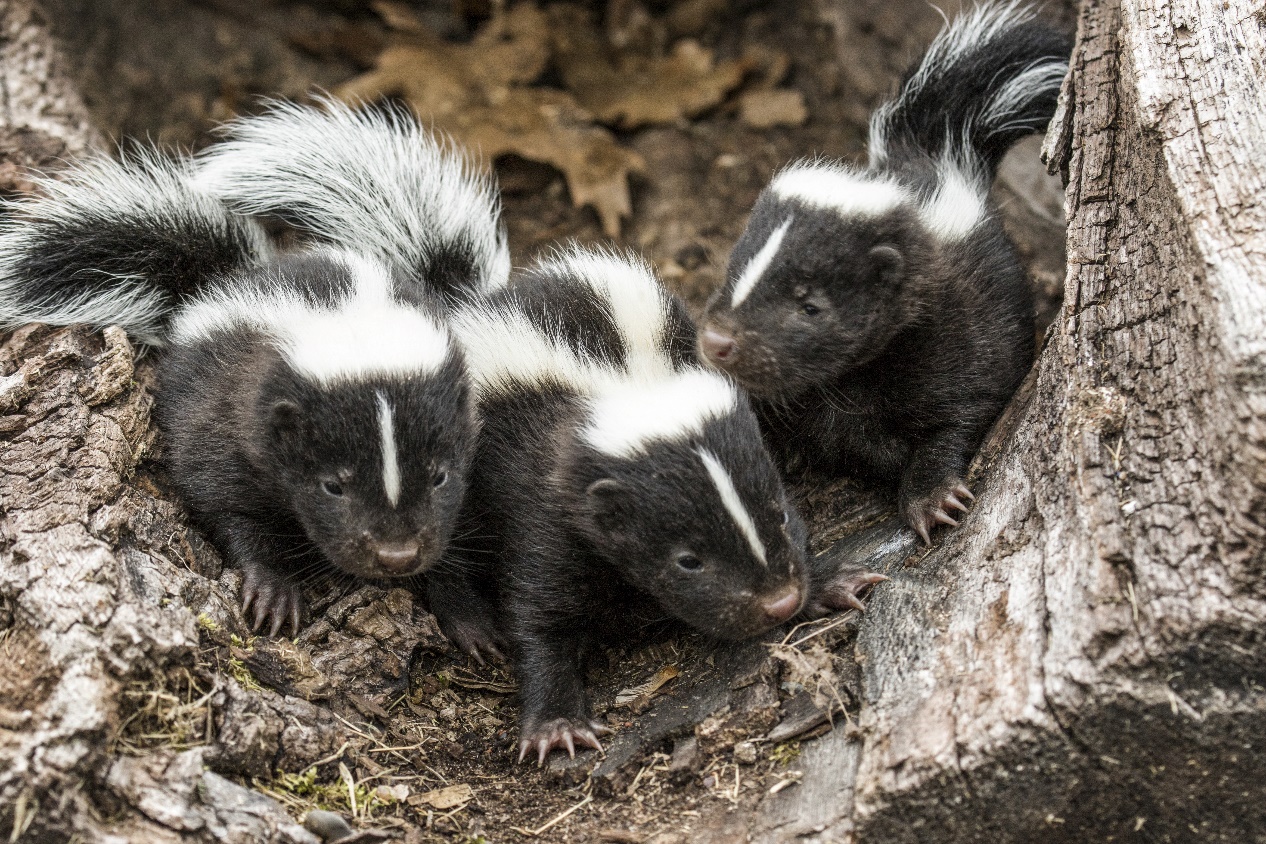
A member of the weasel family, the skunk is disliked for its pungent odor but is harmless. Most types of skunks have a similar breeding season. If you want skunks removed from your property, it’s important to understand these facts and skunk breeding habits:
Mating Season Runs from February Through April
Males can travel up to five miles to look for females, often as soon as February. They emerge from underground skunk dens, which may be under a building, porch, or deck. Males become active sooner during a milder winter and later in harsher winters.
Skunk Babies Are Called Kittens
Skunk kittens, or kits, are usually born in April or May, while younger females tend to have their litters earlier in the spring. Young skunks are blind and deaf at birth. They can start to spray by about a month old.
Skunks Are Polygamous
During skunk mating, a male will try to find as many females as possible. During courting, females generate an odor to reject a male. This odor is also quite undesirable to the human nose.
Females Have 1 to 15 Kits a Year

After a gestation period of 60 to 75 days, female skunks typically have a litter of around seven. Older females tend to have larger litters and enter estrus earlier than younger ones. Males don’t take part in rearing offspring.
What to Do if a Skunk Is Breeding Near Your Home
Young skunks are totally reliant on mothers to teach them how to survive. For the best outcome, a wildlife removal professional will move a skunk family together. Waiting can give babies a better chance of survival.
Contact Animal Capture Wildlife Control at 310-551-0901 for professional and ethical skunk removal from your property.